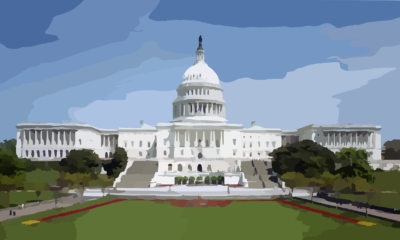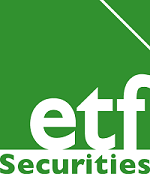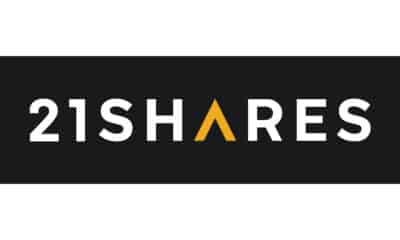ETF Securities Equity Research: China A-shares, Short term headwinds, but positives in the medium term.
Highlights
- Financial conditions in China are tightening as policy makers are attempting to reverse some of the stimulus from last summer.
- The ongoing deleveraging process is a headwind for A-share equity performance in the short-term which has a tight correlation to domestic liquidity conditions.
- However we see state-owned enterprise reforms and the inclusion of A-shares in global equity indices as two drivers of a potential re-rating of the market in the medium term.
Policy is tightening in China
China has been taking pre-emptive steps since the start of the year to tighten financial conditions. The improvement in both the domestic and external outlook since last year has emboldened policy makers to tackle some of the excesses in the build-up in leverage. Since 2008 China has had the biggest increase in its ratio of debt to gross domestic product of any country. The BIS estimates that ratio jumped from 141 per cent at the start of 2009 to 260 per cent by the end of 2016. As the central bank (PBoC) outlined in its monetary report last December, it is increasingly worried about financial sector stability and unintended asset bubbles.
(click to enlarge)
The tightening steps since the start of the year include both quantitative as well as qualitative elements: a) hiking short-term interest rates across the interest rate corridor b) slowing the growth of total social finance and c) tightening bank regulations to reign in off-balance sheet lending and especially the shadow banking sector.
The net impact of these actions has been to tighten domestic liquidity. Both money market rates and bond yields have risen sharply since January to multi-year highs. The move up in rates so far has been orderly, with the PBoC limiting dislocations by injecting liquidity when needed, but it is now 20% more costly for companies and households to borrow than at the start of the year.
(click to enlarge)
The tighter funding conditions have so far had a mixed impact on economic growth. Some indicators such as falling industrial metal prices and an inverted yield curve send a negative signal for future growth prospects. Other indicators such as the latest PMI and retail sales point to a more robust domestic demand picture. Excess capacity in both the industrial and property sectors look less worrying than a few years ago, and external demand still looks strong. As a result, the downside risks to growth are more limited than in the 2015 growth scare. Our own leading indicator signals a moderation in activity but not a sharp slowdown.
Tighter liquidity a negative for short-term equity performance
(click to enlarge)
Although we do not expect a sharp downturn in growth, tighter financial conditions have never been a good backdrop for on-shore domestic equities. A-shares are tightly correlated to domestic liquidity as up to 80% of turnover is generated by retail investors. In previous episodes of liquidity tightening A-shares have underperformed both H-shares and other emerging markets, and so far it has not been different this time. A-Shares have been among the worst performing emerging market year-t0-date, down –1% in local currency versus up +11% for H-shares and +12% for the MSCI EM.
(click to enlarge)
Since mid-March the onshore equity market has seen reduced account openings, lower trading volumes and a reduction in leveraged margin trading. Without a looser policy stance, there are few triggers for A-shares to outperform in the short-term. Valuations are not particularly cheap at 14x forward P/E versus a 5yr average of 13x. Neither are relative valuations to H-shares particularly compelling at the moment trading roughly in-line with the 5-year average.
SOEs reforms and index inclusion are medium-term positives
Despite the short-term headwinds, we think A-share multiples could re-rate to a higher sustained P/E in the medium term for two reasons.
First, we are starting to see signs that state-owned enterprises are becoming more share-holder friendly. The state agency tasked with regulating SOEs (SASAC) issued guidelines last year for SOEs to increase transparency and improve corporate governance. One of the largest state-owned coal companies came out with an unexpected special dividend shortly after the announcement and the expectation is that we could see more SOEs follow suit. We have also seen recent reforms to rationalise capacity in SOE dominated sectors, particularly commodities, where there have been significant plant closures in steel, coal and cement since 2015.
Second, we think the potential inclusion of A-shares in global equity benchmarks is another medium-term driver. There has been ongoing discussions to include on-shore companies in benchmarks available to foreign investors over the years. These discussions have accelerated recently as Chinese authorities have improved foreign access to capital markets over the last two years. We could get a decision by MSCI in mid-June and the resulting inclusion (if any) could begin in June 2018.
Conclusion
The PBoC is taking welcome steps to reign in some of the excessive credit growth since the great financial crisis. Although these steps are a short-term headwind for A-share performance, they should help financial stability in the medium-term. We continue to think that with further capital account liberalisation and SOE reforms, A-shares represent an interesting opportunity over the medium-term.
For more information contact:
ETF Securities Research team
ETF Securities (UK) Limited
T +44 (0) 207 448 4336
E info@etfsecurities.com
Important Information
This communication has been issued and approved for the purpose of section 21 of the Financial Services and Markets Act 2000 by ETF Securities (UK) Limited (“ETFS UK”) which is authorised and regulated by the United Kingdom Financial Conduct Authority (the “FCA”).

 Nyheter3 veckor sedan
Nyheter3 veckor sedan
 Nyheter4 veckor sedan
Nyheter4 veckor sedan
 Nyheter4 veckor sedan
Nyheter4 veckor sedan
 Nyheter4 veckor sedan
Nyheter4 veckor sedan
 Nyheter2 veckor sedan
Nyheter2 veckor sedan
 Nyheter3 veckor sedan
Nyheter3 veckor sedan
 Nyheter2 veckor sedan
Nyheter2 veckor sedan
 Nyheter4 veckor sedan
Nyheter4 veckor sedan






















